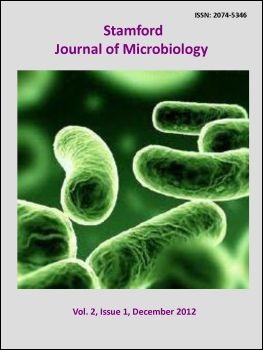Effects of plasmid curing on Rhizobium spp.
DOI:
https://doi.org/10.3329/sjm.v2i1.15212Keywords:
Rhizobium species, legumes, nitrogen fixation, plasmidAbstract
Present study was carried out to determine the difference between the wild type rhizobial strains and plasmid cured strains for some important characteristics such as antibiotic resistance. The rhizobial strains were isolated from locally produced legumes of different varieties such as Pisum sativum, Sesbania aculeata, Vigna mungo, Phaseolus vulgaris, Lens culinaris and Arachis hypogea.They were purified and subjected to various morphological, cultural and biochemical analysis, and also to antibiogram. All the strains showed resistance against amoxicillin and bacitracin, and exhibited higher (50% or more) resistance against ampicillin, erythromycin, nalidixic acid and strptomycin. The isolates were then subjected to plasmid profile analysis. To determine appropriate dose for plasmid curing, Sesbania nodulating rhizobial strain was treated with different concentrations of acridine orange (plasmid curing agent). Rhizobial growth was found in yeast mannitol broth after curing with 30 ?g/ml of acridine orrange. The rhizobial strain was found to be sensitive against amoxicillin, streptomycin and ampicillin after plasmid curing and no exopolysaccharides were found. The present study reveals that the plasmid in rhizobial species might confer the antibiotic resistance and possibly involve in maintaining symbiotic relationships.
DOI: http://dx.doi.org/10.3329/sjm.v2i1.15212
Stamford Journal of Microbiology, Vol.2(1) 2012: 34-37
Downloads
251
431

